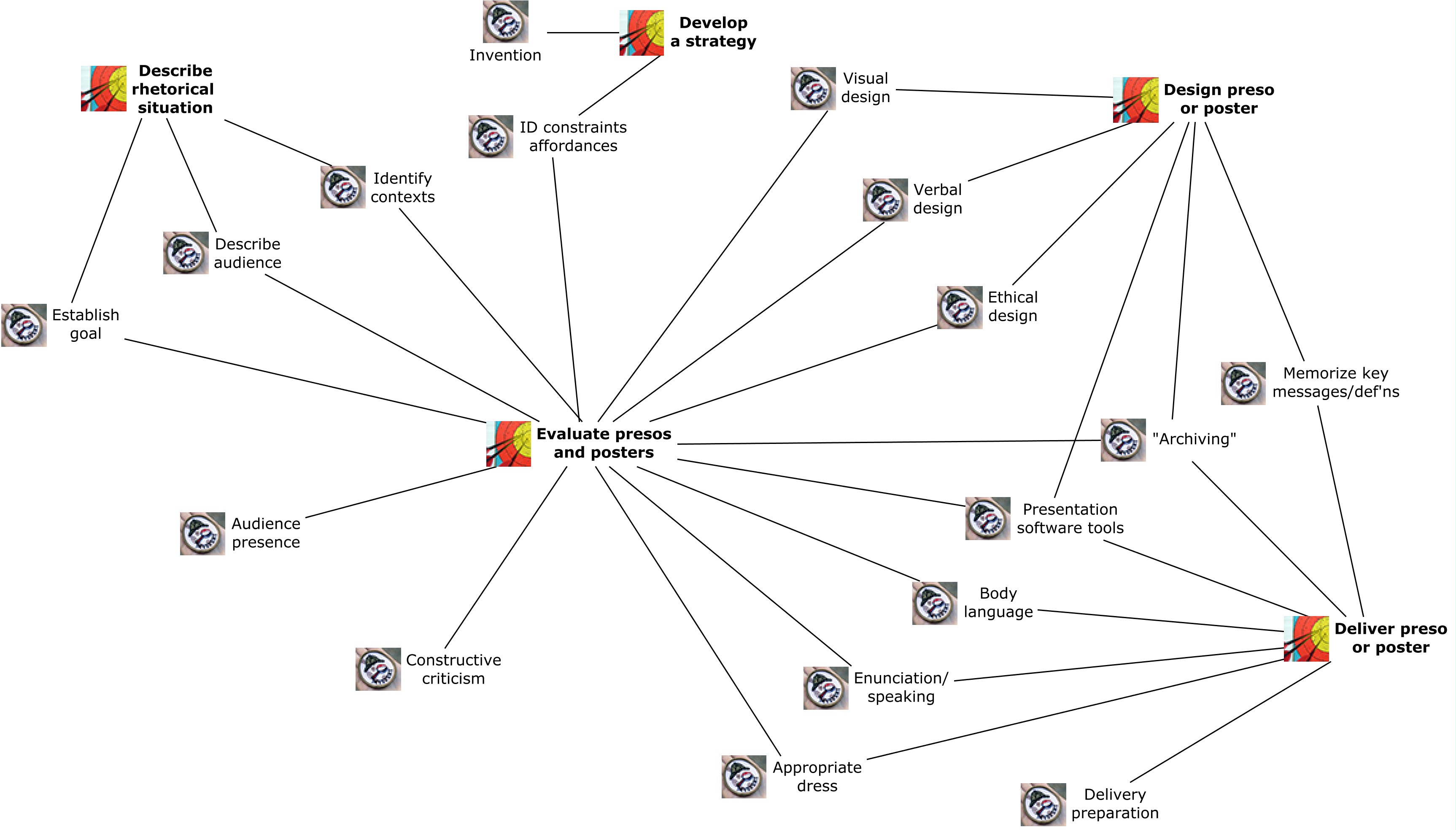I’m teaching a “new prep” in the fall–that is, I’m teaching a class for the first time. This post is about my efforts to develop the course and shows some preliminary work, on which I’d be very interested to read your comments. The course is LMC 3408 Rhetoric of Technical Narratives (Fall 2016, Section D, listed for graduate credit as LMC 6215 Issues in Media Studies, section BL). The theme for the course is “Technical and Professional Presentations and Posters.” After teaching LMC 3408 this way a couple of times, I’m hoping to get a presentations course on the books at Georgia Tech with its own course number (I’m amazed there is not already such a course). You can see the promotional work I’ve done for the course on another page here; it must be working, as the section is almost full (with four grad students and the rest undergrads).
Though I have been giving professional and technical presentations in my business career(s) for 25 years, I have never taught a course on the topic. As I’m going through the design process now, I thought perhaps I might describe what’s happening as I go along in hopes my experiences might prove helpful to others developing similar courses.
I’m not alone in the course-development process: First, I’ve reached out to friends and colleagues, who have provided extensive resources. Thanks are due especially to Laura Pigozzi and Annalise Paaby. Second, I’m attending a Course Design Studio presented by Georgia Tech’s Center for the Enhancement of Teaching & Learning (CETL). The studio runs alternate days starting today and going through next week.
I began today’s studio session hoping to organize the learning objectives of the course using the classical canons of rhetoric:
- Invention
- Arrangement
- Style
- Memory
- Delivery
After today’s session, though, I’m inclined to think that the canons may not provide the best framework for course objectives. (I’ll still be using them to organize my own thinking behind the scenes, though.) Based on the thinking I’ve been giving the class over the last few months and today’s session, I’ve identified the following draft statement of learning objectives and “skill dependencies”–skills necessary to achieve each objective. Later, I’ll be building out the skills by identifying what activities are necessary to learn/model them and what information I need to give students so they can do those activities.
I’d be very interested in the views of anyone reading this (assuming anyone does), so please feel free to chime in.
Draft learning objectives
Your instructor’s vision for this course is that it will help you develop skills and confidence so that you look for opportunities to present your ideas or research and do so with excitement! Thus, upon successful completion of this course, you should be able to:
- Describe the rhetorical situation in which a presentation or poster occurs, including the goals of the presentation, its audience, and its ethical, physical, social, and economic contexts.
- Develop a strategy for a presentation or poster, taking into account the rhetorical situation and the available time, creative skills, and technological tools.
- Design a presentation or poster, making effective and ethical use of written, oral, and visual modes, committing to memory key definitions and messages, and preparing any technological aids to be used.
- Deliver a presentation or poster, enunciating effectively and making use of appropriate nonverbal communication.
- Evaluate presentations and posters, your own and those of others, to provide critical and constructive feedback.
Draft list of skill dependencies
I’ve presented the draft list of skill dependencies in two forms. The graphical form shows the learning objectives (as little targets)) and the skills (as merit badges) required to be able to perform the learning objectives. You probably need to make it bigger to really read it. The list shows the skills listed by learning objective.
1 Describe the rhetorical situation
- Describe audience
- Establish goal
- Identify contexts (ethical, physical, social, econ)
2 Develop a strategy
- Identify constraints and affordances
- Invention
3 Design a presentation or poster
- “Archiving”
- Ethical design
- Memorize key messages/def’ns
- Presentation software tools
- Verbal design
- Visual design
4 Deliver a presentation or poster
- “Archiving”
- Appropriate dress
- Body language
- Delivery preparation
- Enunciation/speaking
- Memorize key messages/def’ns
- Presentation software tools
5 Evaluate presentations & posters
- “Archiving”
- Appropriate dress
- Body language
- Describe audience
- Enunciation/speaking
- Establish goal
- Ethical design
- Identify constraints and affordances
- Identify contexts (ethical, physical, social, econ)
- Invention
- Presentation software tools
- Verbal design
- Visual design

